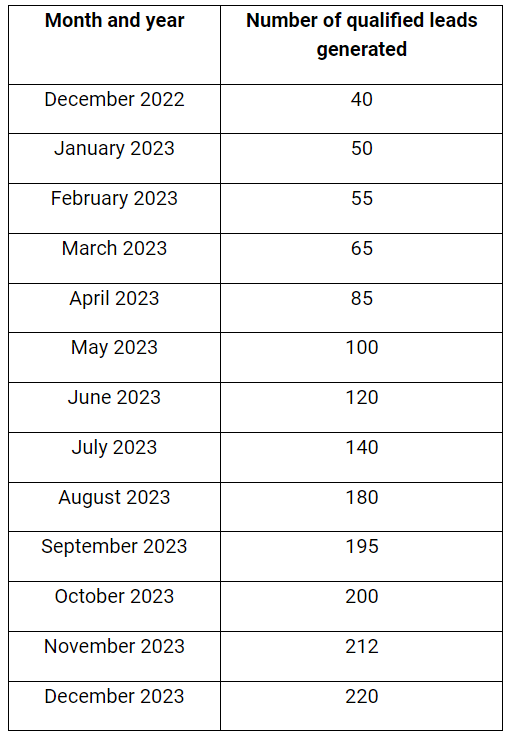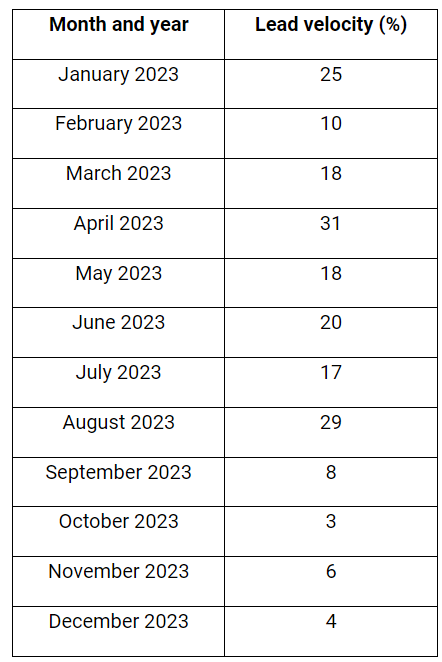Lead velocity rate: the ultimate metric for your SaaS business
- Last Updated : October 14, 2024
- 714 Views
- 3 Min Read

In a dynamic industry like SaaS, you're always expected to stay on your toes. In such an environment, understanding and analyzing the right metrics for your business can sometimes make all the difference between the road to success or stagnation. Your lead velocity rate is an important metric that gives you insight into your growth so you can plan your next move in alignment with your overall goals. Let's dive deeper into this key performance indicator (KPI) to understand what it's all about.
What is a lead velocity rate?
Lead velocity rate, also known as growth velocity rate, is often used to gauge the growth potential and efficiency of one's sales process. It calculates the growth in the number of qualified leads that your business has month over month and provides a snapshot of your sales pipeline. Lead velocity rate is an important KPI, especially for SaaS businesses. The most common analysis businesses draw from this metric is future sales predictions and a detailed understanding of the sales pipeline.
How to calculate lead velocity rate
Lead velocity can be calculated using the following formula:

If you want to calculate your annual growth velocity rate, simply calculate lead velocity for all months and divide it by 12.

Let's take a closer look at this with an example:

Lead velocity for January 2023 = (Number of qualified leads in Jan 2023 - Number of qualified leads in Dec 2022 / Number of qualified leads in Dec 2022) x 100
= (50-40/40) x 100 = 25%
Lead velocity for February 2023 = (55-50/50) x 100 = 10%
After calculating lead velocity for the rest of the year similarly, we arrive at the following figures:

The lead velocity rate for 2023 is the average of the lead velocity rates of all months. So the lead velocity for 2023 is 16% (rounded).
Why is lead velocity rate a crucial metric for SaaS businesses?
For SaaS businesses that have a recurring revenue model, having pipeline with steady flow of leads is the only way to grow sustainably. Identifying their growth velocity rate helps businesses track this aspect of their marketing process in real time. Lead velocity rate gives you an indication of future growth or decline so that you can adjust your strategies accordingly. Tracking your growth velocity can also help in making informed decisions and ensure proper planning and allocation of resources and funds to fuel growth.
However, it's recommended to use growth velocity along with a profitability metric like monthly recurring revenue, because although lead velocity tells us about trends in the number of qualified leads, it doesn't yield any insight into how many qualified leads have converted to paying customers or how much revenue you ultimately generate. Using a combination of these two metrics can give you a clear understanding of your sales pipeline, while also pointing out shortcomings (if any).
While calculating the right metrics and analyzing them from time to time is crucial for businesses to strategize, it's also important that the data used in these analyses is up to date. Having the right CRM can help you not only get the data in real time but also understand the analysis of these metrics and receive recommendations for corrective measures.


